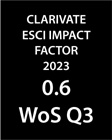Innovative initiative for the strengthening of cooperation of small and medium size enterprises – the „B Light” scheme
DOI:
https://doi.org/10.17649/TET.39.3.3608Keywords:
cohesion policy, cross-border cooperation, SME development, innovation, Hungary, Croatia, InterregAbstract
Cross-border cooperation has become an integrated element of the European Union’s Cohesion Policy. In line with the strategic objectives, priorities of cross-border cooperation have also been changed over time: more attention has been devoted to entrepreneurship and innovation. Since cross-border programmes are generally understood as non-profit schemes, direct SME funding is a new practice. In this vein and based on some Western European examples a pilot programme was implemented in the Croatia-Hungary border area in the 2014-2020 period that directly supported businesses.
This paper provides an overlook on SME development in EU cross-border cooperation and summarises the particularities of the analysed instrument. The aim of the quantitative analysis is to present the territorial and sectoral patterns of cooperation and provide a picture on the innovation-content of the joint projects. To this end sectoral characteristics of the cooperating SMEs were first analysed, then their activity from territorial point of view, highlighting the sectoral preferences of certain settlement types. Secondly, based on a review of the projects’ content, the paper seeks to illustrate how the submitted and selected projects can be understood as ‘innovative,’ in line with the relevant literature. For the analysis of data on applied and supported projects of the B Light, grant scheme were used.
Our analysis shows the examined scheme preferred “materialised” sectors such as metal processing and machinery that had a lot higher success rate than those SMEs operating in the services sector. Territorially, the Pécs–Osijek axis appears as the main cooperation vector, although the Western zone, particularly from the Croatian side, also played a key role. SMEs operating in the service sector rather concentrated in the cities, while in the rural areas industry was dominant. The most rural area was Somogy county as the border area’s middle zone appeared to be the least active in application, which should be improved in future schemes. However, as the scheme preferred industry over services, territorial distribution of projects selected for funding appeared to be relatively balanced. According to the categorisation applied for innovation vs. market orientation projects, despite the scheme’s preference to innovation, majority of the submitted projects were classiTed as market-oriented. However, innovation projects prevailed among the selected ones, in line with the objectives of the scheme. The role of major cities is also important in the case of SME projects, similarly to nonprofit projects, as shown by several scholars. However, SMEs selected for granting show a somewhat more balanced territorial distribution. Therefore, SME cooperation schemes with properly tailored criteria may be an adequate tool for mobilising peripheral border areas.
Downloads
Published
How to Cite
Issue
Section
License
Copyright (c) 2025 Pámer Zoltán, Márton György, Buttinger Petra

This work is licensed under a Creative Commons Attribution 4.0 International License.
Authors wishing to publish in the journal accept the terms and conditions detailed in the LICENSING TERMS.






